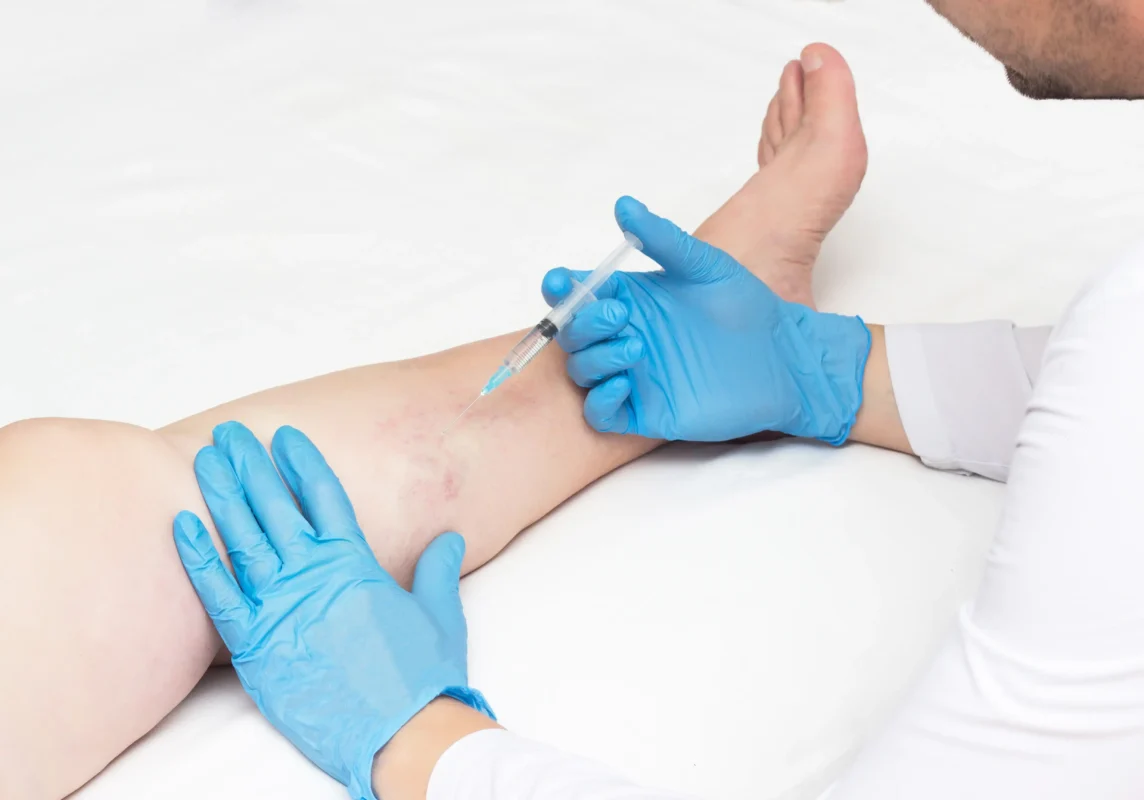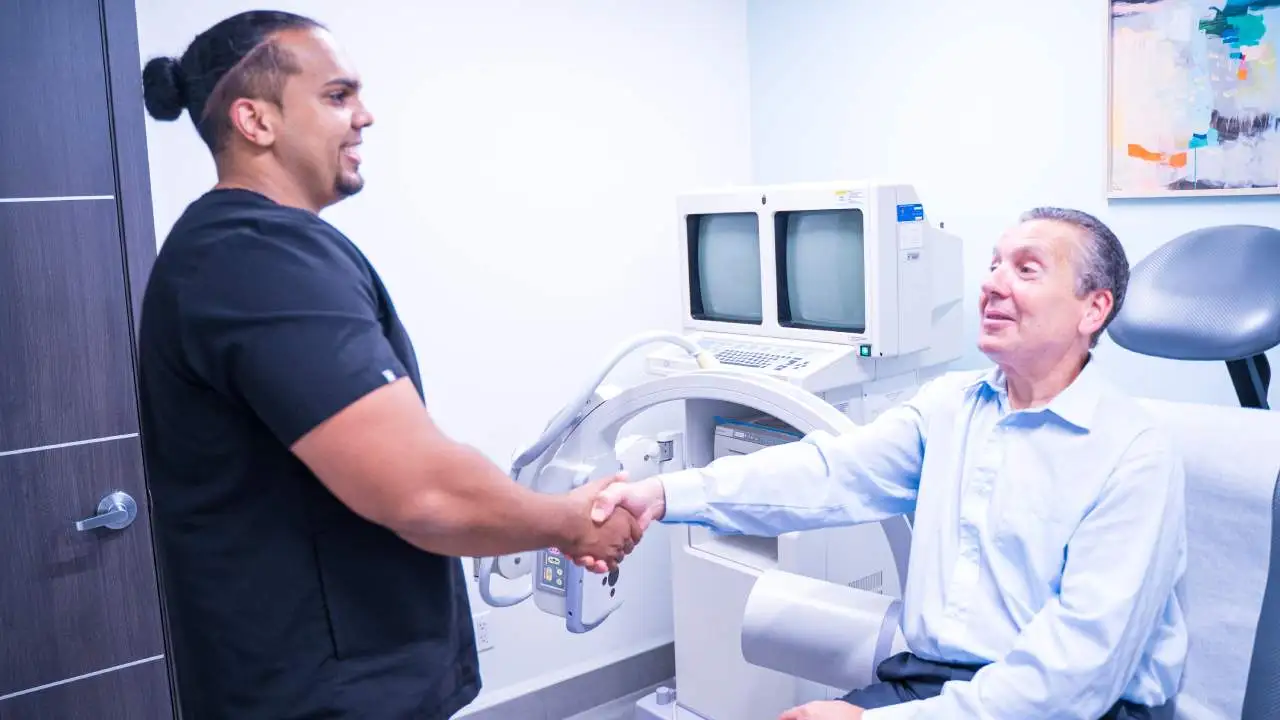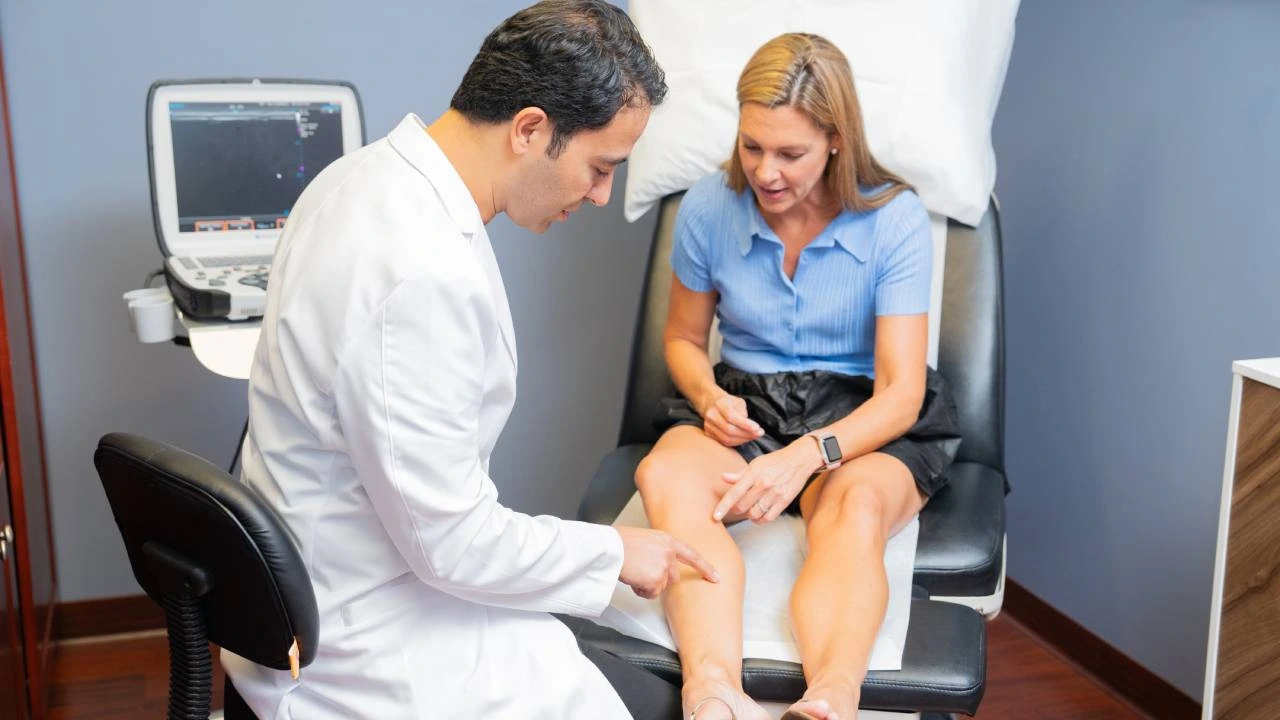Visible veins are common, but noticing green veins, blue veins, or even purple veins might leave you wondering about their significance. Are they just a cosmetic concern, or could they signal something more serious like varicose veins? Keep reading if you are dealing with green veins and would like to seek treatment, or keep reading to delve into why veins appear green and how this might relate to vein health.
Why Do Veins Appear Green?
The color of your veins depends on their depth, the thickness of your skin, and the way light interacts with your body. Even though the blood running through your veins is red because of a molecule called hemoglobin that carries oxygen to all parts of the body, it absorbs most colors of light except for blue and green. These are reflected back and filtered by the skin, giving veins their greenish or bluish hue. In reality, veins aren’t green or blue—this is just a visual illusion caused by the interplay of light, blood, and skin!
Green veins are typically visible when the vein is close to the skin’s surface, and light reflects off the skin in a way that highlights the green color. This is entirely normal for many people and doesn’t always mean a problem exists.
However, when green veins become more noticeable or are accompanied by symptoms such as swelling, heaviness, or discomfort, it could indicate underlying venous insufficiency—the condition at the root of varicose veins. Impaired blood flow or weakened vein walls can make these veins stand out more prominently.
Are Green Veins Related to Varicose Veins?
The appearance of green veins might be an early indicator of varicose veins, especially when paired with symptoms such as:
- Aching or throbbing pain in the legs
- Swelling, particularly in the lower legs
- A feeling of heaviness or fatigue in the limbs
- Skin discoloration or itchiness around the vein
Varicose veins occur when one-way valves in the veins fail, causing blood to pool and increasing pressure that stretches and weakens the vein walls. This leads to enlarged, twisted veins that may bulge beneath the skin, often accompanied by symptoms like aching and swelling. While green veins aren’t always varicose, they can signal early venous insufficiency, a condition where blood flow is impaired.
How Are Blue and Purple Veins Connected?
In addition to green veins, blue or purple veins may also become more visible, often indicating superficial veins struggling to return blood to the heart. These may be linked to venous insufficiency or spider veins, a milder form of vein damage. Although spider veins are less severe than varicose veins, they can signal early vein health issues and should be addressed to prevent progression.
Tips to Prevent Vein Damage
If you’ve noticed green veins, blue veins, or purple veins, there are proactive steps you can take to support vein health and reduce the risk of developing spider veins or varicose veins:
- Stay Active: Regular exercise, like walking or swimming, promotes circulation and strengthens vein walls.
- Wear Compression Stockings: These specialized garments improve blood flow and prevent blood pooling in the veins.
- Elevate Your Legs: Raising your legs above heart level helps reduce pressure on the veins.
- Maintain a Healthy Weight: Extra weight puts additional strain on your veins, increasing the risk of venous insufficiency.
- Avoid Prolonged Sitting or Standing: Take regular breaks to move around and encourage proper circulation.
When to See a Vein Specialist
If you’re concerned about visible green veins or are experiencing symptoms such as swelling, discomfort, heaviness, or skin discoloration, it may be time to consult a vein specialist. While green veins may simply be a cosmetic concern for some, they can also be an early indicator of more serious conditions like venous insufficiency or varicose veins. Left untreated, these issues can progress, leading to complications such as chronic pain, leg ulcers, or even blood clots. Seeking professional advice ensures that you understand the underlying cause of your vein issues and take the appropriate steps to address them.
At a vein treatment clinic, specialists have access to advanced diagnostic tools, such as Doppler ultrasound imaging, which provides a detailed assessment of your blood flow and vein health. This non-invasive test helps identify areas of impaired circulation, valve dysfunction, or vein damage. Armed with this information, the vein specialist can create a personalized treatment plan tailored to your needs and the severity of your condition.
Treatment Options for Green, Blue, and Purple Veins
If your green veins are associated with varicose veins, or if you’ve noticed prominent blue or purple veins, minimally invasive treatments are available to provide both symptom relief and cosmetic improvement.
One common option is sclerotherapy, a procedure in which a specialized solution is injected directly into the affected veins. This solution irritates the vein walls, causing them to collapse and gradually fade as the body reroutes blood through healthier veins. Another effective approach is laser therapy, which is non-invasive and highly precise. Laser treatments use focused light energy to close off damaged veins, redirecting blood flow to properly functioning veins. For larger varicose veins, endovenous ablation is a preferred option. This technique involves using heat or laser energy delivered through a catheter to seal off problematic veins, improving circulation and reducing vein-related symptoms.
These treatments not only address the underlying vein dysfunction but also improve the appearance of affected areas, boosting confidence and comfort. Additionally, they help alleviate common symptoms of varicose veins, such as aching, swelling, and heaviness in the legs, while supporting overall vein health and reducing the risk of future complications. If you’re experiencing discomfort or concerns about visible veins, consulting with a vein specialist can help determine the best treatment plan for your needs.
Take Charge of Your Vein Health Today
Visible green veins, blue veins, or purple veins can be an early sign of spider veins, varicose veins, or venous insufficiency. While they may initially seem like a cosmetic concern, it’s essential to monitor their progression and seek professional advice when needed.
By maintaining a healthy lifestyle, staying active, and consulting with a vein specialist, you can take control of your vein health and prevent complications. If you’re ready to address your concerns, schedule a consultation and explore effective treatments for maintaining healthy, vibrant veins.









